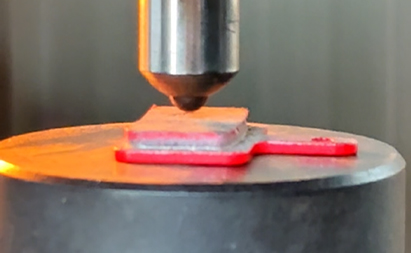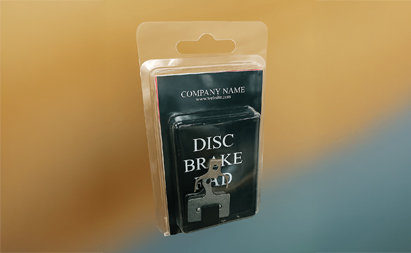
As global concerns about environmental sustainability and human health risks continue to rise, traditional brake pads containing copper are increasingly being scrutinized and phased out. In recent years, "copper-free brake pads" have emerged as a key area of innovation within the bicycle industry. This article explores the role of copper in brake pads, its potential hazards, and the advantages and challenges of transitioning to copper-free alternatives.
The Role and Benefits of Copper in Brake Pads
Copper is a commonly used additive in traditional brake pads, offering several performance advantages:
- Excellent Thermal Conductivity: Copper helps dissipate heat quickly, reducing the risk of brake fade during extended use.
- Stable Friction Coefficient: It provides consistent braking feel, making it especially suitable for long-distance rides or high-temperature environments.
- Reduced Pad Wear: Copper has lubricating properties that help extend the lifespan of both the brake pad and rotor.
Because of these benefits, copper-containing brake pads have long been widely used in mountain bikes, e-bikes, and performance-oriented models, where strong and reliable braking performance is essential.
The Environmental and Health Risks of Copper
While copper offers notable performance benefits, its negative impacts on the environment and human health are becoming a growing concern:
- Source of Heavy Metal Pollution: As brake pads wear down, copper-containing particles are released into the environment, contaminating soil and water. This can disrupt aquatic ecosystems by affecting microorganisms, algae, and fish populations.
- Persistence and Bioaccumulation: Copper ions are not easily biodegradable and tend to accumulate in rivers and lakes, leading to long-term environmental contamination.
- Potential Human Health Hazards: Prolonged exposure or inhalation of copper dust may irritate the respiratory tract and skin. In severe cases, it could impair liver and kidney function.
According to California’s Copper Brake Pad Legislation (SB 346), copper content in automotive brake systems must be phased out, reflecting an irreversible global trend toward copper reduction.
Regulations and Trends on Banning Copper in Brake Pads
Several countries and regions have introduced restrictions on copper content in brake pads, accelerating the shift toward copper-free materials:
- California and Washington, USA: In 2010, both states passed legislation requiring brake pads to contain less than 5% copper by 2021, and further reducing it to below 0.5% by 2025. These regulations aim to reduce copper pollution in aquatic ecosystems.
- United States Federal Level: In 2015, the U.S. Environmental Protection Agency (EPA) signed the Copper-Free Brake Initiative with the auto industry, aligning nationwide goals with state-level regulations in California and Washington.
- New Zealand: Local governments have called for a nationwide ban on copper-containing brake pads to address water pollution caused by copper runoff.
- European Union: Although no unified copper content limit has been established yet, several member states are increasing scrutiny on copper’s environmental impact and are considering future regulatory measures.
The implementation of these laws is pushing manufacturers to rapidly develop copper-free brake pad formulations that meet environmental standards and enhance their global market competitiveness.
R&D Directions and Market Advantages of Copper-Free Brake Pads
In response to regulatory pressure and shifting market demands, copper-free brake pads are gaining rapid momentum. Their development is centered around the following key objectives:
- Eco-Friendly Formulations: Copper-free compounds significantly reduce the release of metallic particles, minimizing impact on aquatic environments and ecosystems.
- Lower Human Toxicity Risk: These formulations help reduce the risk of inhaling heavy metal dust for both end-users and maintenance personnel.
- Regulatory Compliance: Copper-free brake pads meet evolving environmental regulations in the EU, U.S., Japan, and other regions, making them favorable for export and OEM contracts.
These advantages position copper-free pads not only as an environmentally responsible solution but also as a strategic product line for manufacturers aiming to stay competitive in global markets.
Technical Challenges and Brand Positioning Opportunities
While copper-free brake pads offer clear advantages in terms of environmental compliance, they also present several technical hurdles:
- Brake Fade Risk: Without copper's thermal conductivity, there's a greater risk of brake fade on long downhill rides.
- Increased Noise Control Complexity: The absence of copper can lead to more brake noise, requiring advanced formulation adjustments to maintain acoustic performance.
- Higher Material and Production Costs: Premium alternatives to copper often come at a higher price, increasing manufacturing costs and market price pressure.
However, these challenges also create opportunities for brands to differentiate themselves:
- Manufacturers capable of developing stable, durable copper-free compounds demonstrate technical strength and environmental responsibility.
- Successfully launching high-performance copper-free pads opens the door to the premium eco-conscious segment, making it a valuable strategic advantage.
- For OEM/ODM suppliers, offering compliant and differentiated copper-free options can serve as a core selling point in both regulatory-sensitive and environmentally focused markets.
Conclusion: Copper-Free Brake Pads Are the Inevitable Next Step
In light of increasing regulatory pressure and rising environmental awareness, copper-free brake pads are no longer an option—they are becoming a strategic necessity for manufacturers and brands.
Adopting copper-free materials is not just an act of environmental responsibility—it’s also a commitment to the safety and health of riders. For forward-looking companies, this shift represents both a moral obligation and a competitive advantage in a changing global market.
ADUI Bicycle Brake Pads Are Fully Compliant with REACH and RoHS Standards
All ADUI bicycle brake pads are manufactured to meet strict environmental and safety regulations. We guarantee compliance with:
- REACH (Registration, Evaluation, Authorisation and Restriction of Chemicals): Ensuring that no harmful substances are present beyond permissible limits throughout the product lifecycle.
- RoHS (Restriction of Hazardous Substances Directive): Confirming that the brake pads are free from restricted heavy metals and hazardous substances, including lead, mercury, and hexavalent chromium.
This commitment reflects ADUI's dedication to product safety, environmental sustainability, and global regulatory compliance—making us a reliable partner for OEM and export clients worldwide.
Reminder: This article is for reference only
ADUI is a specialized brake pads manufacturer. We offer brake pads in a variety of materials and can adjust performance and lifespan according to customer needs, providing products that best meet client requirements.





